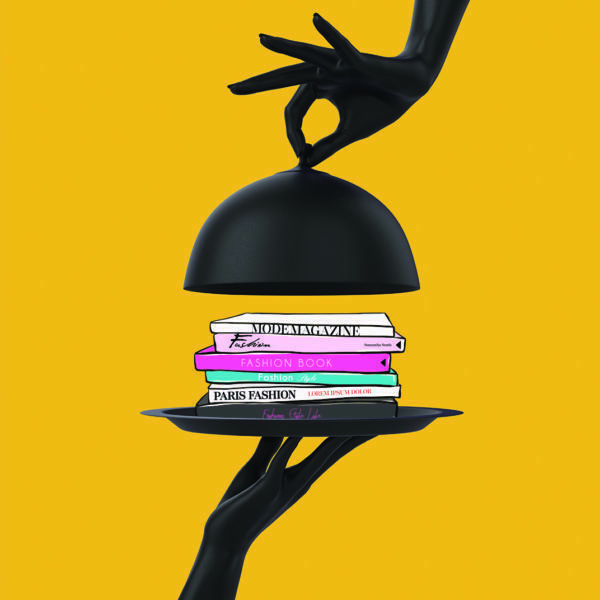The landscape of the literary world has undergone a profound transformation with the rise of self-publishing, marking a significant shift in the dynamics of storytelling, authorship, and readership. Gone are the days when the gatekeepers of traditional publishing houses solely determined which stories made it to the bookshelves. Today, self-publishing has emerged not just as an alternative route but as a formidable force in its own right, democratizing the process of publishing.
This evolution has granted authors unprecedented control over their work, from the nuances of creative expression to the intricacies of marketing and distribution. With platforms like Amazon’s Kindle Direct Publishing and others paving the way, writers can now directly connect with their audience, bypass traditional barriers, and bring a diverse array of voices and stories to the forefront. This newfound autonomy has not only expanded the horizons for aspiring authors but has also enriched the literary landscape with a plethora of unique and untold stories, underscoring the dynamic and evolving nature of the publishing world. Let’s dive in and read about self-publishing success stories.
The Self-Publishing Phenomenon
The shift from the traditional publisher to self-publishing represents a paradigmatic change in the literary domain, signifying a move towards greater authorial independence and diversity in content. This transition has been propelled by several factors, key among them being the advent of digital technology and the emergence of online platforms that facilitate direct author-to-reader engagement. Traditional publishing, with its stringent selection processes and prolonged timelines, often presented formidable barriers to entry for many aspiring authors. In contrast, self-publishing has dismantled these barriers, offering a more inclusive and accessible avenue for writers to share their work.
Your Publishing Journey Awaits – Start NowCentral to this self-publishing phenomenon is the role of platforms like Amazon’s Kindle Direct Publishing (KDP), which have been instrumental in democratizing the publishing process. KDP and similar platforms offer tools that empower authors to publish their works in e-book and print-on-demand formats, making their books available to a global audience with minimal upfront costs. This ease of access is complemented by a comprehensive suite of resources for editing, formatting, and cover design, further simplifying the journey from manuscript to published book.
Moreover, self-publishing platforms provide authors with the freedom to set their own prices, run promotions, and make real-time adjustments based on reader feedback and market dynamics. This level of control extends to marketing and distribution, areas traditionally managed by publishing houses, thereby allowing authors to experiment with innovative strategies tailored to their specific audience.
The self-publishing phenomenon has not only empowered authors but also led to a diversification of the literary landscape, with genres and topics that might not find a place in traditional publishing finding enthusiastic readerships. This shift underscores a broader trend towards a more democratized, participatory, and varied literary culture, where the success of a book is increasingly determined by its resonance with readers rather than its adherence to the preferences of a select few gatekeepers.
Case Study 1: Amanda Hocking and the Paranormal Romance Boom
Amanda Hocking’s ascent from obscurity to becoming a self-publishing icon encapsulates the seismic shift in the literary world, brought about by the digital self-publishing revolution itself. Hocking, a young writer from Minnesota, ventured into self-publishing after facing numerous rejections from traditional publishers. Her foray into the paranormal romance genre, particularly with her “My Blood Approves” and “Trylle Trilogy” series, marked the beginning of an extraordinary journey in the indie publishing sphere.
The Early Struggles and the Leap of Faith
Hocking’s initial challenges were emblematic of many aspiring authors—repeated rejections, the daunting prospect of never seeing her work in print, and the frustration of her stories remaining untold. Yet, it was her resolve and belief in her narratives that propelled her to explore self-publishing. In 2010, with little to lose, she uploaded her first book to Amazon and other platforms, setting in motion a series of events that would redefine her life and career.
Mastering the Digital Space
What set Hocking apart was not just her compelling storytelling but her astute understanding of the digital marketplace. She priced her e-books strategically, often starting at 99 cents, making them irresistible to readers hungry for new paranormal romance content. This pricing strategy, coupled with the burgeoning e-reader market, facilitated the rapid dissemination of her work.
Hocking’s success was also bolstered by her savvy use of social media and blogging platforms. By engaging directly with her readers through these channels, she fostered a loyal fan base that was eager to spread the word about her books. Her approach was grassroots and organic, relying on the quality of her work and the power of digital word-of-mouth.
The Paranormal Romance Boom
Hocking’s rise coincided with a growing appetite for paranormal romance, a genre that was gaining momentum thanks to the success of series like “Twilight.” Her ability to tap into this trend, delivering stories that resonated with and captivated the imaginations of young readers, was pivotal. Her worlds of vampires, trolls, and other supernatural beings were not just an escape but became a part of the mainstream reading culture.
Transitioning to Traditional Publishing
The turning point in Hocking’s career as an indie publisher came when her self-published books sold over a million copies, making her one of the first indie authors to achieve such a feat. This unprecedented success caught the attention of traditional publishers, leading to a multimillion-dollar deal with St. Martin’s Press. The deal was a testament to the changing perceptions within the publishing industry regarding self-published authors and highlighted the potential for successful transitions to traditional publishing avenues.
Lessons Learned
Amanda Hocking’s journey offers several key insights for aspiring authors. Firstly, it underscores the importance of understanding and leveraging genre trends. Hocking’s alignment with the paranormal romance trend was instrumental in her initial capture of readers’ interests.
Secondly, her story exemplifies the power of online marketing and direct engagement with readers. By utilizing digital platforms effectively, she built a robust online presence that facilitated the viral spread of her work.
Lastly, Hocking’s transition to a traditional publishing deal after achieving self-publishing success illustrates the evolving landscape of the literary world. It demonstrates that self-publishing is not only a legitimate path to becoming a published author but can also serve as a springboard to traditional publishing opportunities.
Amanda Hocking’s narrative is a beacon for many, highlighting the potential for self-publishing to catapult authors from anonymity to bestseller status, provided they navigate the digital terrain with strategic acumen and an unwavering belief in their storytelling prowess.
Your Publishing Journey Awaits – Start NowCase Study 2: From Poetry to Million-Selling E-Book
In the realm of self-publishing success stories, few are as compelling and instructive as the journey of Rupi Kaur, whose transition from a poetry enthusiast to a bestselling author encapsulates the essence of modern literary evolution. Kaur’s initial foray into the literary world was through a self-published poetry collection titled “Milk and Honey.” What followed was an unprecedented rise to fame, powered by her distinctive narrative voice and adept use of social media, culminating in the transition to a full-time writing career and the publication of subsequent bestsellers.
Embarking on a Literary Journey
Kaur’s writing journey first began in the quiet corners of her college apartment, where she penned poems that deeply resonated with themes of love, loss, trauma, and healing. Her decision to self-publish “Milk and Honey” was driven by a desire to retain creative control and a belief in the power of her poetry to connect with readers on a personal level. The book, characterized by its minimalistic style and candid exploration of complex emotions, quickly set her apart in the literary community.
Mastering the Art of Social Media
A pivotal factor in Kaur’s success was her masterful use of social media platforms, particularly Instagram, to share her work. Her visually striking poetry, accompanied by simple illustrations, was perfectly suited for the visual-centric nature of these platforms. By posting her poems online, Kaur tapped into a vast audience, engaging directly with readers and fostering a sense of community among her followers. Her approach was not just about promoting her book; it was about sharing a piece of herself, making her readers feel seen and understood.
A Unique Approach to Storytelling
Kaur’s storytelling is marked by its raw authenticity and simplicity. She broke away from traditional poetry structures, favoring a free verse style that spoke directly to the hearts of her readers. This accessibility was key to her appeal, allowing her poetry to resonate with a diverse audience, including those who might not typically engage with poetry. Her work became a conduit for discussions about femininity, abuse, and empowerment, themes that struck a chord with readers worldwide.
Building a Literary Brand
The overwhelming response to “Milk and Honey” propelled Kaur to new heights, establishing her as a prominent figure in contemporary poetry. Her success story is a testament to the power of branding in the literary world. Kaur didn’t just sell books; she built a brand that represented authenticity, emotional depth, and resilience. This branding extended to her public appearances, book covers, and social media presence, creating a cohesive identity that fans could relate to and rally behind.
Transitioning to a Full-Time Writing Career
The success of “Milk and Honey” enabled Kaur to transition to a full-time writing career, a dream for many aspiring authors. She continued to build on her success with subsequent works, each reinforcing her status as a literary influencer and best-selling author. Her journey from a self-published poet to an internationally acclaimed writer highlights the changing dynamics of the publishing industry, where social media and direct reader engagement can launch careers.
Lessons Learned
Rupi Kaur’s story offers invaluable lessons for aspiring authors. It underscores the importance of creating diverse content that can connect with readers on an emotional level. Her strategic use of social media for visibility demonstrates the potential of these platforms in building a loyal fanbase. Moreover, Kaur’s success emphasizes the significance of community building, where authors and readers create a shared space for dialogue and understanding.
Kaur’s journey from self-publishing a poetry book to becoming a best-selling author exemplifies the transformative power of authentic storytelling and the strategic use of digital platforms. It serves as an inspiration for writers aspiring to carve their own path in the literary world, reminding them of the potential that lies in embracing one’s unique voice and leveraging the connective power of social media.
Case Study 3: Hugh Howey and the “Wool” Series
Hugh Howey’s journey with the “Wool” series is a cornerstone narrative in the annals of self-publishing success, illustrating not only the potential for independent authors to reach wide audiences but also the innovative negotiation strategies that can redefine author-publisher relationships. Beginning as a standalone short story, “Wool” burgeoned into a bestselling series under Howey’s meticulous care, challenging traditional publishing paradigms and setting new precedents for rights management.
The Genesis of “Wool”
Howey’s foray into the “Wool” universe started modestly, with a single short story published on Amazon’s Kindle platform. The narrative’s compelling dystopian premise—survivors living in a vast, subterranean silo due to a toxic world outside—struck a chord with readers, who clamored for more. Responding to this demand, Howey expanded “Wool” into a series, weaving intricate plots and richly developed characters that captivated a growing fanbase.
Embracing the Self-Publishing Model
Howey’s decision to self-publish was initially born of necessity but soon proved to be a boon. The direct-to-reader model allowed him to retain an unprecedented level of control over his work, from pacing the release of sequels to setting price points. This autonomy fostered a nimble and responsive relationship with his readership, enabling real-time adjustments based on feedback and engagement metrics.
A Revolutionary Approach to Rights Management
As “Wool” gained popularity, Howey found himself in a unique position when traditional publishers came knocking. In a move that was then virtually unheard of in the literary world, Howey negotiated a groundbreaking deal that allowed him to retain the digital rights to his series while selling only the print rights to Simon & Schuster. This strategic differentiation between print and digital rights was a game-changer, highlighting Howey’s foresight in the increasingly digital-centric publishing landscape.
Quality Storytelling at the Core
Central to Howey’s success was his unwavering commitment to quality storytelling. The “Wool” series, with its intricate world-building and deep, philosophical underpinnings, offered more than just escapist fiction; it provided a narrative rich with commentary on society, governance, and human nature. This depth ensured that the series was not only commercially successful but critically acclaimed, solidifying Howey’s reputation as a skilled storyteller.
Fostering a Dedicated Fanbase
Howey’s engagement with his readers played a crucial role in the series’ expansion and success. By maintaining an active online presence and being transparent about his writing process, Howey cultivated a community of dedicated fans. This direct line of communication not only bolstered his sales through grassroots marketing but also created a loyal reader base eager to support his work in any format.
Lessons Learned
Hugh Howey’s experience with the “Wool” series offers several key takeaways for aspiring authors. The innovative management of print and digital rights demonstrates the importance of understanding and leveraging the distinct aspects of each format in the digital age. His own self-publishing success story underscores the viability of self-publishing as a path not only to commercial success but also to creative autonomy.
Moreover, Howey’s own publishing journey emphasizes the critical role of quality storytelling in building and sustaining a reader base. It proves that at the heart of every successful publishing venture lies the story itself—its ability to engage, entertain, and provoke thought.
Finally, Howey’s story is a testament to the power of maintaining creative control and the potential benefits of direct engagement with one’s audience. In an era where readers crave authenticity and connection, the ability to interact with and respond to one’s audience can be just as important as the stories being told.
Hugh Howey’s “Wool” series not only entertained and enthralled but also revolutionized self-publishing strategies, setting new standards for author empowerment and creative success in the literary world.
Your Publishing Journey Awaits – Start NowCharting Your Path: Essential Insights for Aspiring Self-Published Authors
The inspiring journeys of Amanda Hocking, Rupi Kaur, and Hugh Howey illuminate the vast potential within the self-publishing realm, offering invaluable lessons for aspiring authors. A common thread among these success stories is the strategic approach to successful self-publishing authors: understanding and engaging with their target audience, leveraging innovative marketing techniques, and maintaining a steadfast commitment to their craft.
Understand Your Audience
Grasping the nuances of your target demographic is pivotal. Hocking’s alignment with the paranormal romance trend and Kaur’s deep connection with her followers on social media exemplifies the importance of knowing what resonates with your audience. Tailor your content and marketing strategies to speak directly to their preferences and interests.
Embrace Continuous Marketing Learning
The digital landscape is ever-evolving, and staying abreast of the latest marketing tactics can significantly amplify your book’s visibility. Howey’s groundbreaking rights management strategy and Kaur’s adept use of social media for branding highlight the need for continuous learning and adaptation in marketing approaches. Explore and utilize various platforms to reach and engage with your audience effectively.
Persistence is Key
Perhaps the most crucial takeaway is the unwavering persistence these authors demonstrated. Rejection and initial lack of recognition didn’t deter them; instead, it fueled their determination to succeed on their terms. Embrace feedback, learn from setbacks, and keep refining your work.
In navigating the self-publishing journey, the confluence of a clear understanding of your audience, a commitment to learning and evolving your marketing strategies, and an indomitable spirit of persistence can pave the way for remarkable success. These principles, illustrated by the journeys of Hocking, Kaur, and Howey, serve as a guiding beacon for those embarking on their own publishing ventures.
If you’re looking to publish your book, Spines offers the simplest and fastest option for authors in the 21st century. Sign up for free and start exploring your options today.
Your Publishing Journey Awaits – Start NowFrequently Asked Questions (FAQ)
Q1: Can I really make a living through self-publishing?
A1: Yes, many authors have successfully made a living through self-publishing. Success stories from self-published writers like Amanda Hocking and Hugh Howey show that with the right strategy, quality content, and marketing, self-publishing can be a lucrative path.
Q2: How important is marketing for a self-published author?
A2: Marketing is crucial. As a self-published author, you’re responsible for promoting your book. Utilizing social media, building an author website, and engaging directly with readers, as demonstrated by Rupi Kaur, can significantly enhance your book’s visibility and sales.
Q3: Do I need to hire a professional editor and cover designer?
A3: While not mandatory, hiring professionals can greatly improve the quality of your book. A compelling cover attracts readers, and a well-edited book ensures a smooth reading experience, increasing the likelihood of positive reviews and word-of-mouth recommendations.
Q4: Is it possible to transition from self-publishing to traditional publishing?
A4: Yes, it’s possible. Authors like Amanda Hocking have transitioned to traditional publishing after achieving success through self-publishing. This often involves negotiating deals that respect your existing self-published work and future projects.
Q5: How do I retain creative control over my work when self-publishing?
A5: Self-publishing inherently allows you to retain creative control over your content, pricing, and marketing strategies. Platforms like Amazon’s Kindle Direct Publishing enable you to make real-time adjustments based on reader feedback and market trends.
Q6: What are the key elements of a successful self-published book?
A6: Key elements include a captivating story or concept, professional editing and formatting, an eye-catching cover design, a strategic marketing plan, and ongoing engagement with your readership.
Q7: How can I build a fanbase for my self-published work?
A7: Building a fanbase involves consistent engagement through social media, email newsletters, author blogs, and public readings or signings. Creating quality content that resonates with your target audience, as seen in Rupi Kaur’s success, is also vital.
Q8: Are there any hidden costs in self-publishing?
A8: While self-publishing platforms may not charge upfront for publishing, costs can arise for professional editing, cover design, marketing and promotion, and ISBN purchase, if desired. Planning a budget for these expenses can help manage costs effectively.
Q9: Can I publish in both digital and print formats?
A9: Absolutely. Many self-publishing platforms offer options for both e-books and print-on-demand services, allowing you to reach a wider audience who may prefer different formats.
Q10: What should I do if my self-published book isn’t selling?
A10: If your book isn’t selling, consider revisiting your marketing strategy, cover design, book description, and pricing. Seeking feedback from readers and other authors can also provide insights for improvement. Persistence and willingness to adapt are key, as shown in Hugh Howey’s journey with the “Wool” series.








